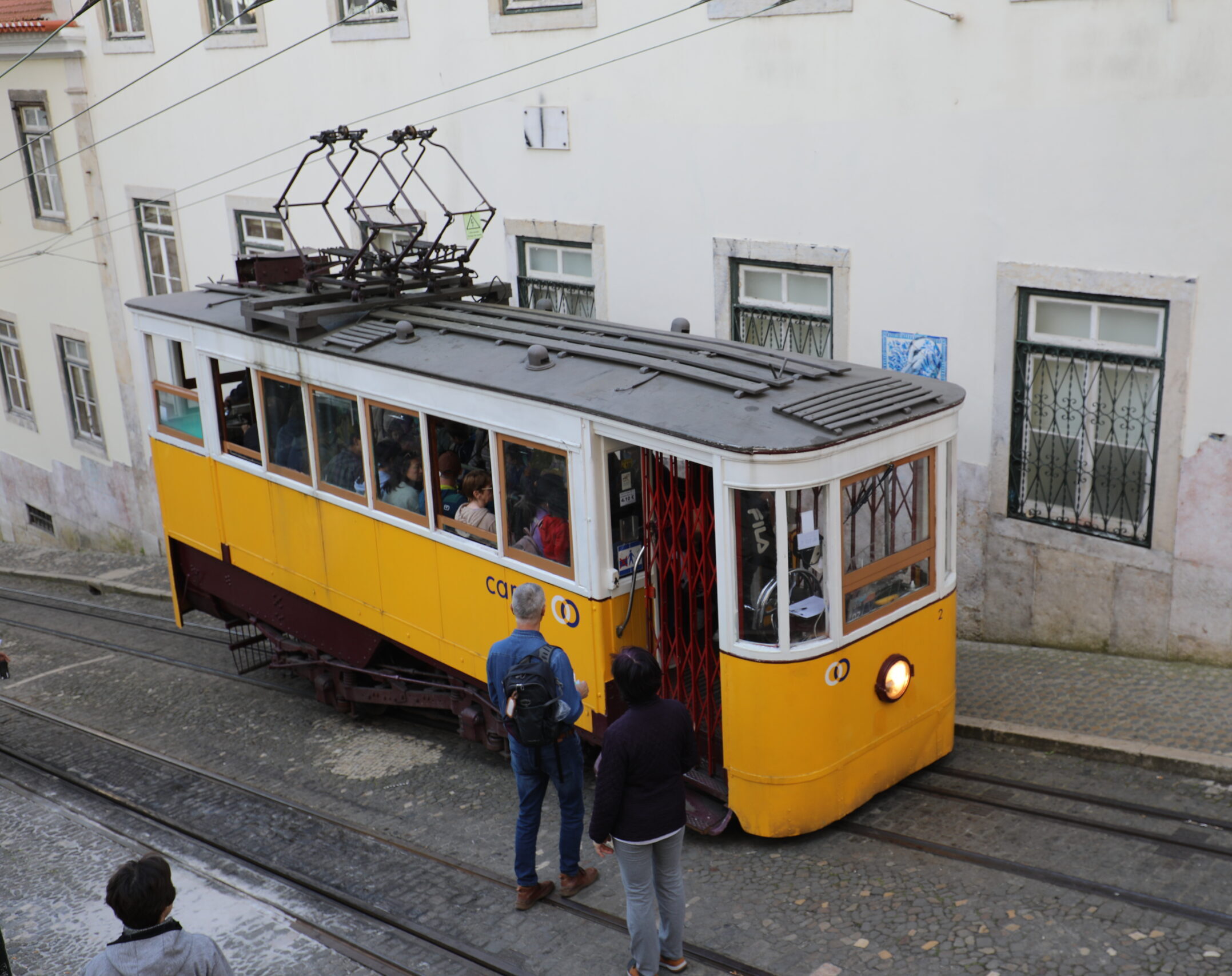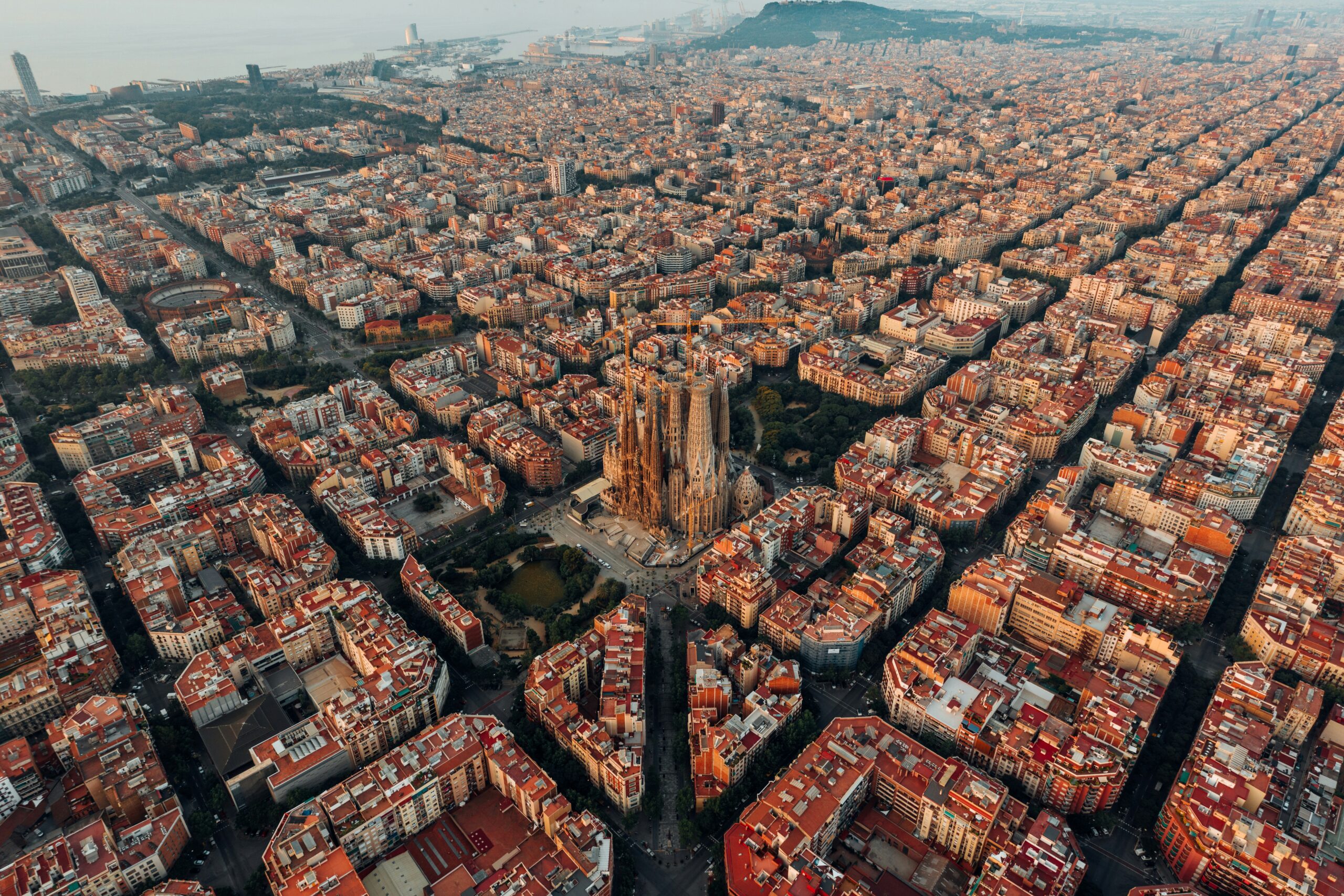Lisbon, the vibrant capital of Portugal, is famous for its picturesque cobblestone streets, historic trams, and stunning views from its iconic hills. It’s a city packed with charm, character, and history, offering a unique blend of old-world charm and modern attractions. But for wheelchair users, Lisbon’s steep terrain, narrow sidewalks, and historic infrastructure might seem daunting at first glance.
The good news? With a bit of preparation, local knowledge, and some smart planning, Lisbon can be an accessible and enjoyable destination for wheelchair travellers. From accessible public transportation options to flat walkways in key neighbourhoods, there are ways to experience the city’s beauty without missing out.
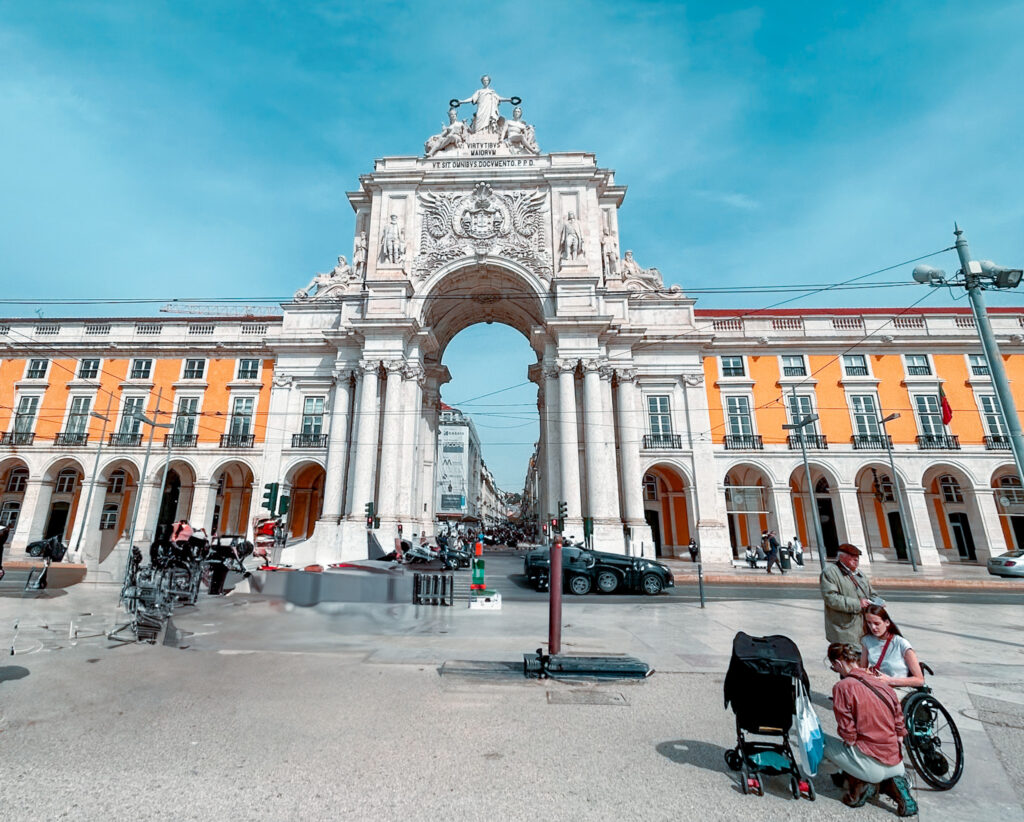
In this guide, we’ll cover essential tips for navigating Lisbon with ease, share recommendations for wheelchair-friendly attractions and restaurants, and provide insights into the best ways to get around, whether by adapted taxis, modern trams, or exploring on foot. With the right mindset and tools, you’ll discover that Lisbon is a city that warmly welcomes all travellers.
The Challenges of Accessibility in Lisbon
While Lisbon has made strides in becoming more accessible, there are still hurdles that travelers in wheelchairs need to consider before visiting.
1. Cobblestone Streets
Lisbon’s charm is closely tied to its charming yet tricky cobblestone streets. These picturesque alleys are beautiful but can be uneven and challenging for wheelchairs. Areas like Alfama, one of the city’s oldest districts, feature narrow, hilly streets that are particularly difficult to manoeuvre.
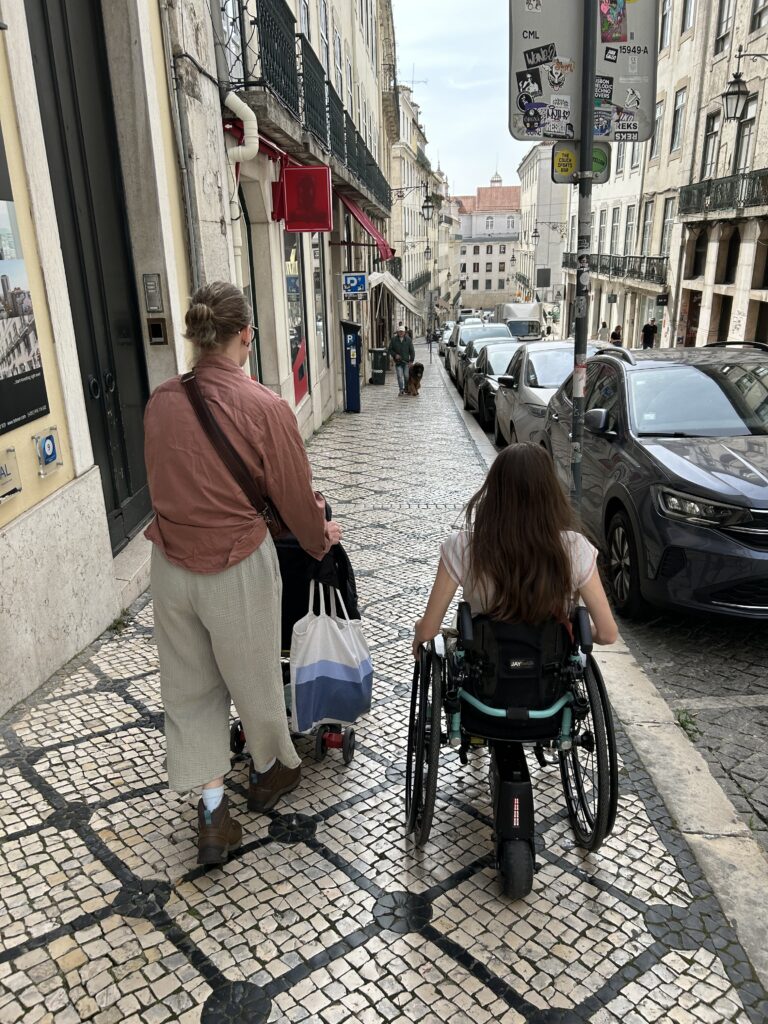
2. Hilly Terrain
Nicknamed the “City of Seven Hills,” Lisbon’s landscape is staggeringly beautiful, with breathtaking viewpoints at every turn—but this comes with significant challenges for those with limited mobility. Navigating these steep inclines can be tiring and require some planning.
3. Historic Infrastructure
Lisbon boasts an impressive array of historic buildings and trams, but preserving their heritage means that many aren’t fully wheelchair accessible. The famous Tram 28, for example, is a tourist favorite but isn’t adapted for wheelchairs. Similarly, older architectural landmarks may lack modern accessibility features such as elevators or ramps.
The Positives: Accessible Lisbon
Thankfully, the city is modernizing and making real efforts to accommodate wheelchair travellers. Here are some reasons for optimism when visiting Lisbon.
1. Accessible Public Transport
Lisbon’s public transport is developing steadily to meet accessibility needs.
- Buses: The majority of Lisbon’s buses are wheelchair-friendly, equipped with ramps and priority seating areas.
- Metro: While not all metro stations are accessible, many key stations now provide elevators and wheelchair-friendly entry points. Check the Lisbon Metro website ahead of time (elevators are often out of order)
- Trams: Though the iconic Tram 28 may not be accessible, modern trams, like Tram 15, which serves the flat and scenic Belém area, are wheelchair accessible.
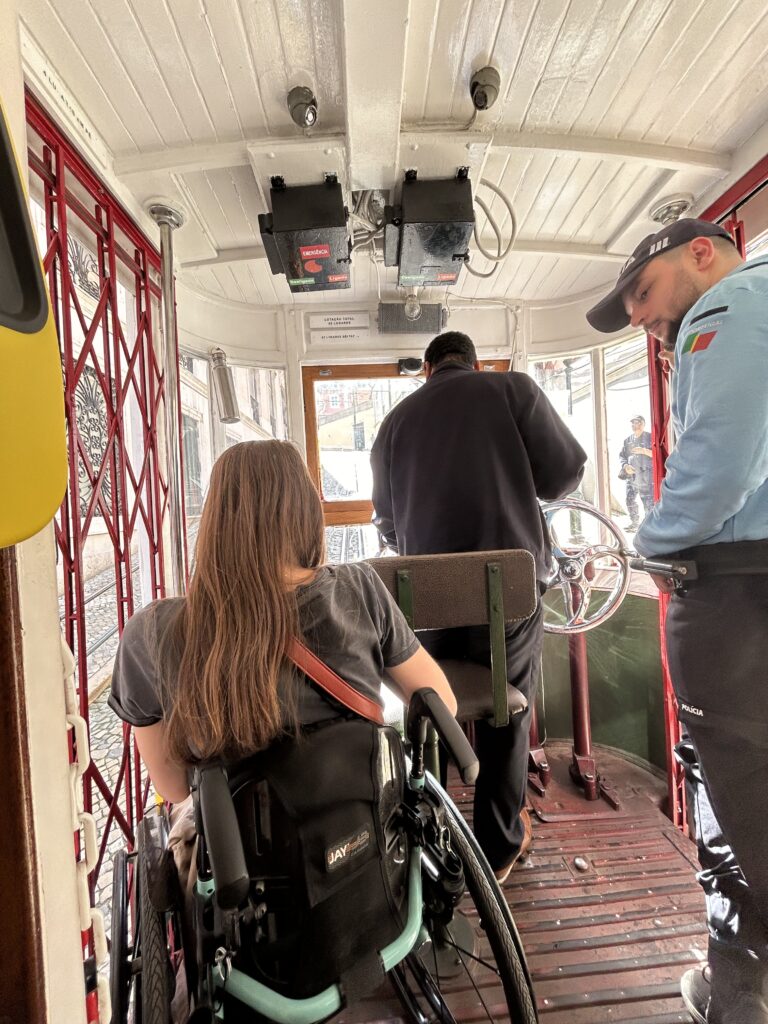
2. Modern Attractions and Spaces
The riverside area of Lisbon, particularly along the Tagus River, offers a picturesque and accessible route. The Belém District is a highlight, with wide, smooth pathways perfect for wheelchairs and strollers, allowing visitors to enjoy stunning views of iconic landmarks such as the Belém Tower, the Monument of the Discoveries, and the modern MAAT Museum.
This area also features plenty of accessible cafes and rest areas, making it an ideal spot for a leisurely outing. Additionally, the Cais do Sodré to Parque das Nações promenade provides a scenic and wheelchair-friendly route, enabling visitors to fully experience the vibrant atmosphere of Lisbon’s riverside.
3. Adapted Taxis and Rideshares
Lisbon offers several wheelchair-accessible transportation options, including adapted taxis and ridesharing services like Uber Access. This makes traversing the city’s steeper and more difficult areas much simpler.
We used a company called Lisbon VIP Tours on several occasions during our trip, and they exceeded all expectations. They provided an accessible van equipped for mobility needs and a wonderful driver/guide who made our sightseeing experiences truly memorable.
The first trip was a comprehensive tour around the key landmarks of Lisbon, allowing us to explore the city’s rich history and vibrant culture with ease. The second was a full day trip to the enchanting town of Sintra, filled with stunning architecture and breathtaking views. We cannot recommend Lisbon VIP Tours highly enough for their professionalism, thoughtfulness, and dedication to providing an inclusive and enjoyable experience.
Wheelchair-Friendly Attractions in Lisbon
Many attractions in Lisbon have been adapted to ensure greater accessibility for all visitors. Here are some must-visit spots for wheelchair users.
1. Belém Tower (Torre de Belém)
While the interior of this historic tower is not entirely wheelchair-friendly due to its narrow stairs and multiple levels, the exterior and surrounding area are fully accessible and easy to enjoy.
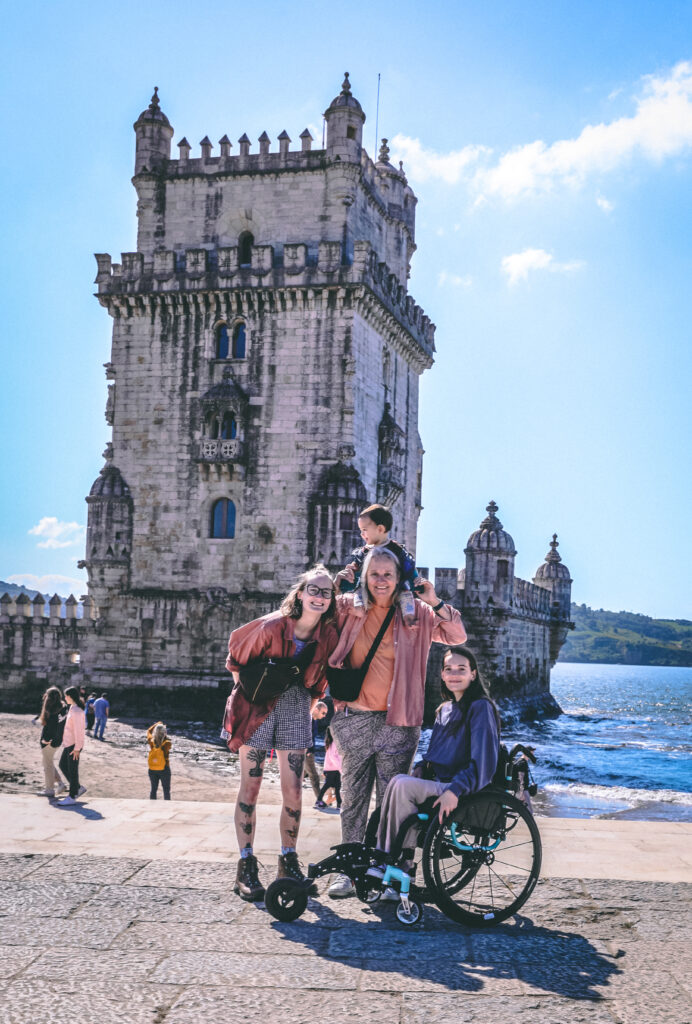
The beautifully maintained promenade and gardens nearby provide a relaxing space to take in the tower’s stunning architecture. Belém’s flat terrain, combined with its wide pathways, makes it an excellent spot to explore as a wheelchair user, offering picturesque views of the river and plenty of accessible cafes and attractions in the vicinity.
2. Praça do Comércio
This grand, riverside square is flat and easy to navigate, making it accessible to everyone and offering stunning, unobstructed views of the Tagus River. Surrounded by elegant historic buildings and open-air cafes, it’s a perfect spot to relax and soak in Lisbon’s vibrant atmosphere.
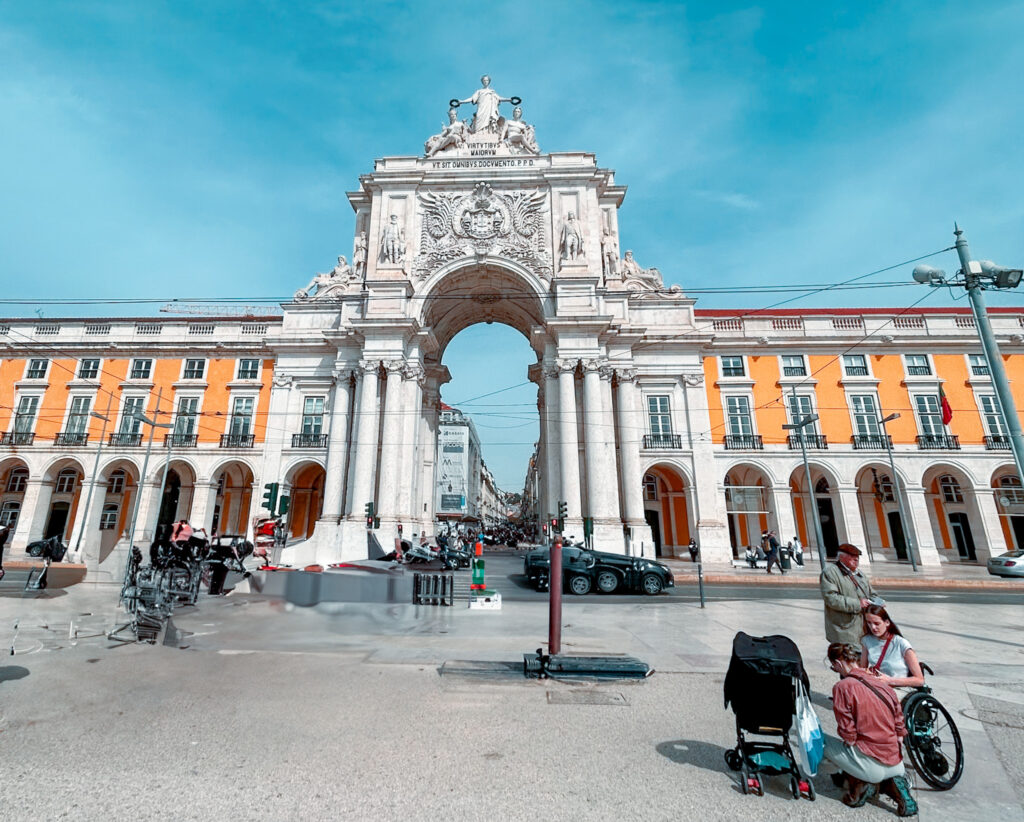
Whether you’re admiring the iconic Arco da Rua Augusta or simply enjoying a peaceful stroll by the water, this square provides a serene escape without the challenge of navigating the city’s steep inclines. It’s a must-visit destination for those wanting to experience Lisbon’s charm at a leisurely pace.
3. São Jorge Castle
Although the climb to São Jorge Castle can be steep, the site has made efforts to ensure it is inclusive for all visitors. Accessible entrances and modified paths have been introduced to help wheelchair users explore and enjoy the beauty and history of this iconic landmark. From the stunning views over Lisbon to the rich historical significance of the castle, these features ensure that more people can experience its charm and cultural heritage.
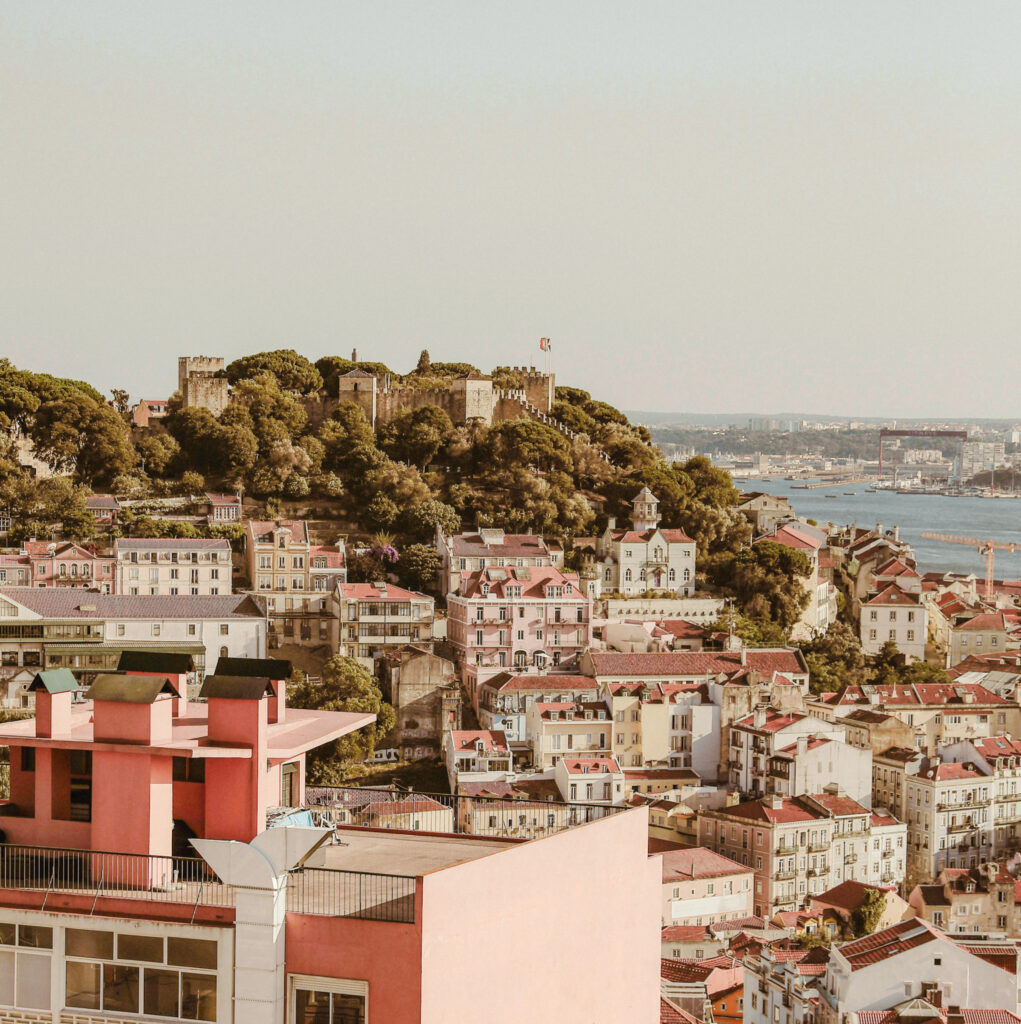
People with disabilities are offered a discounted entry fee, and one companion can enter free of charge. You can find a barrier free map of the castle here. You can make arrangements with a taxi to drop you directly at the main entrance of the castle to avoid the walk (or push) up the hills. There is one wheelchair accessible bathroom onsite.
4. Lisbon Oceanarium
Located in the accessible district of Parque das Nações, the Oceanário de Lisboa is a must-visit destination for anyone in Lisbon. Fully wheelchair-friendly, it ensures that visitors of all abilities can enjoy its captivating exhibits. This world-class aquarium offers an engaging, family-friendly experience, showcasing an incredible variety of marine life from across the globe.
From the mesmerising central tank teeming with sharks, rays, and colorful fish to the thematic habitats representing different ocean ecosystems, there’s something to amaze and inspire everyone. It’s the perfect spot for a fun and educational day out with family or friends.
5. Santa Justa Lift
This stunning elevator, a signature feature of Lisbon’s skyline and a marvel of 19th-century engineering, is fully wheelchair-accessible, making it a must-visit for everyone. Rising high above the city streets, it offers breathtaking panoramic views of Lisbon’s iconic rooftops, historic landmarks, and vibrant neighbourhoods .
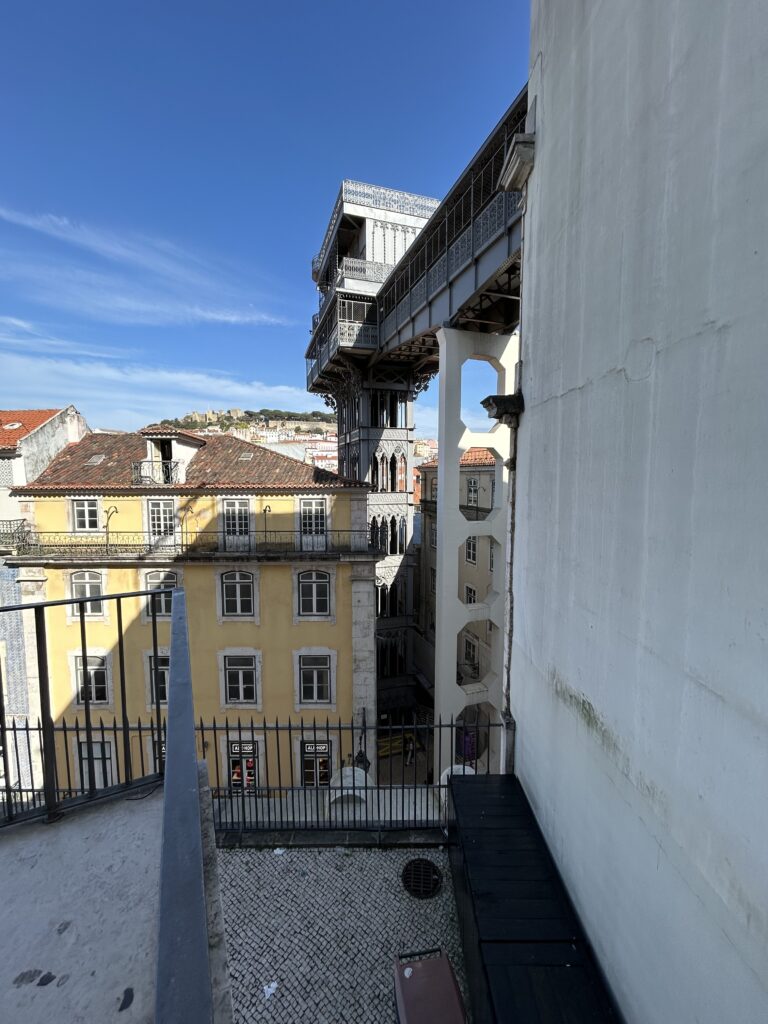
Whether you’re a history enthusiast or simply looking for a unique perspective of the city, this elevator is an experience you won’t want to miss. Be sure to add it to your itinerary!
Portuguese Cuisine and Dining Options
Lisbon is a haven for food lovers, offering a rich culinary experience that caters to both traditional and modern tastes. Portuguese cuisine is famous for its fresh seafood, aromatic spices, and hearty flavors. Many restaurants in Lisbon are wheelchair-accessible, ensuring everyone can savor the local delicacies. Be sure to try the iconic bacalhau à brás (a flavorful codfish dish) and the beloved pastéis de nata (custard tarts).

Popular dining areas like Bairro Alto and Cais do Sodré boast a range of options, from casual eateries to fine dining establishments, making it easy to find something delicious while enjoying the city’s vibrant atmosphere.
Tips for Exploring Lisbon in a Wheelchair
While traveling to Lisbon as a wheelchair user requires some preparation, these tips will help make your trip smoother and more enjoyable.
1. Stay in Accessible Accommodation
Lisbon offers a variety of wheelchair-accessible accommodations to ensure a comfortable stay for all travellers. Here are a few tips for choosing wheelchair-friendly hotels in Lisbon:
- Opt for accommodations in areas like Avenida da Liberdade and Baixa offer excellent amenities combined with central locations close to major attractions.
- Look for places with en suite bathrooms featuring roll-in showers or grab bars.
- Contact hotels in advance to confirm accessibility details and avoid any surprises.
During our visit to Lisbon we chose to stay at an exceptional hotel in the Alfama district, Hotel Convento do Salvador. This hotel is perfectly located for exploring all the major attractions of Lisbon including the São Jorge Castle, Lisbon Cathedral, and Praca do Commercio.
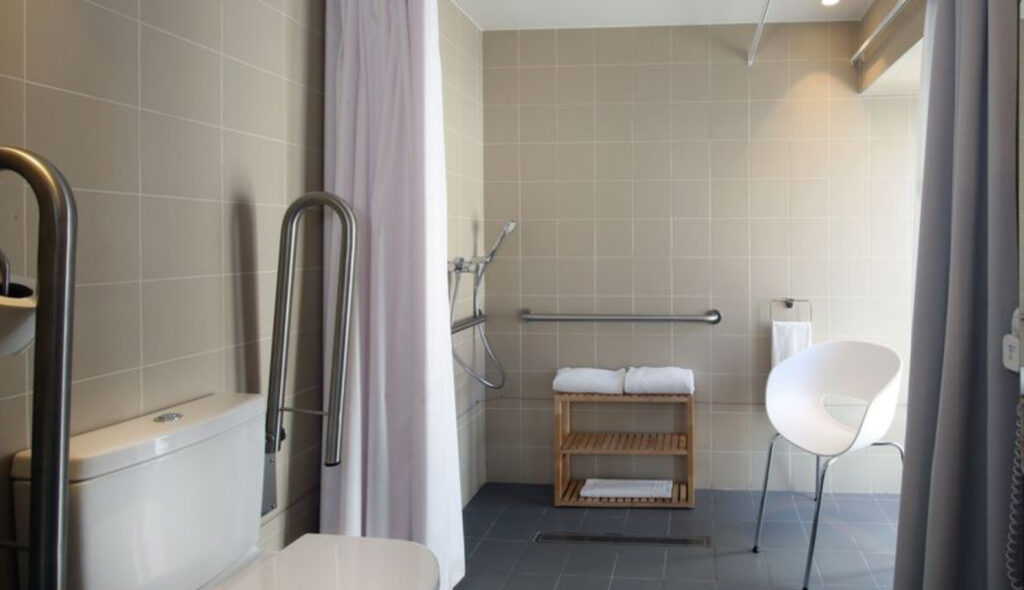
2. Plan ahead
- Research the accessibility of attractions, routes, and restaurants in advance.
- Use mobile apps like Wheelmap and Google Maps to find wheelchair-friendly locations and step free routes.
3. Use Accessible Transport
- Make use of accessible buses, modern trams, and adapted taxis for easier travel. Try and avoid steep hill climbs by planning routes strategically.
4. Pack Strategically
- Equip your wheelchair with sturdy wheels to handle Lisbon’s cobblestone streets.
- Consider bringing accessories like cushions or bags designed for uneven terrain to make journeys more comfortable.
Exploring Lisbon with Confidence
While Lisbon’s historic charm and hilly terrain can pose challenges, the city is making impressive progress toward becoming more accessible for wheelchair users. By focusing on its modern attractions, leveraging public transport options, and planning ahead, you can create an enjoyable and memorable experience during your visit to Portugal’s capital.
Every effort Lisbon has made toward accessibility reflects its warm and inclusive culture, offering travelers of all abilities the chance to enjoy its beauty, cuisine, and vibrant spirit.
Have you experienced Lisbon in a wheelchair? Share your stories and tips in the comments below to inspire future travellers in the community!
Happy Travels, Always

